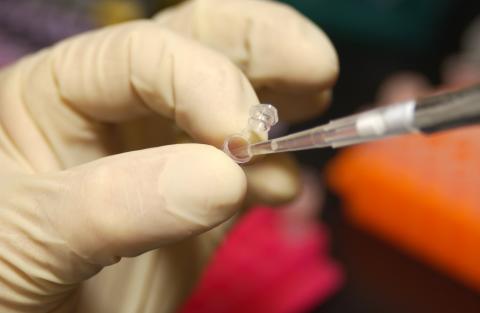Diagnosis of genetic diseases Part 4

In many clinics this survey is called the "genetic passport", it is enough to be done once, because the obtained results over time do not change. According to the results of DNA fingerprinting, the doctor gives the patient advice ranging from lifestyle and diet to professional risks. Adherence to them helps to avoid development of many diseases. The types of human genetic disease and key methods of their identification depending on what caused the genetic disease, the doctor chooses and the methods of examination of the patient. Consider the major groups of pathologies.
Chromosomal diseases the Cause of these genetic diseases is a violation of the quantitative composition of chromosomes or in their structure. For example, in the presence of an extra (third) 21st chromosome is formed down syndrome. The cause of the syndrome Turner is the presence of only one X chromosome in women. But if a man has sex chromosomes are present in a combination of XXY, not XY, he placed the Klinefelter syndrome. Many chromosomal abnormalities, for example, doubling or tripling incompatible with life. Most often, the embryos are killed in the womb, and born children live only a few days.
At the same time, there are cases when a person has different types of cells carrying abnormal chromosomes and do not have these disorders. This phenomenon is called "mosaicism", and then pathology may occur to a lesser extent or practically not occur. The diagnosis is carried out for karyotyping. As example is Klinefelter syndrome a rare genetic disorder, which affects men. Outwardly it is expressed in appearance, increase in mammary glands, sexual dysfunction. A detailed study of the composition of the sex chromosomes helps identify what kind of violation has occurred, the patient (the extra X chromosome may be several).
Depending on the karyotype varies and the severity of symptoms 20. May be compromised and the structure of chromosomes, not just their number. In the process of cell division, if "something goes wrong", there is a loss of part of chromosome or, on the contrary, doubling of a section. The chromosome can turn 180 degrees (inversion), or its ends to form a ring. For example, a cat's cry syndrome is a consequence of the restructuring of the fifth chromosome. Children born with such disorders, specifically shouting (the sound resembles a meowing cat). They usually die in the first years of life, as the pathology is manifested by numerous malformations of internal organs.
Patients with chromosomal diseases appoint cytogenetic examination. Usually he exposed and parents to establish whether there is an inherited pathology or is it an isolated case. Gene mutations Violations cannot occur in the chromosome, but only on one section of it. Then we are talking about genetic mutation. These diseases are called monogenic, to them, in particular, include many errors of metabolism: cystic fibrosis, phenylketonuria, syndrome, etc. Many of these diseases can be detected by mandatory screening of all infants at birth. A child who has abnormalities may be sent for further genetic testing.
But taken in time measures can in some cases prevent the development of serious disorders. At the same time there are diseases caused by gene mutations, which are not seen clearly and definitely. As example, the syndrome of Tungsten, which debuts as diabetes at an early age, then is manifested by impairment of vision or hearing. A doctor can confirm the syndrome just by the results of genetic examination. Multifactorial genetic disease They are found in DNA identification. The analysis confirms the presence or absence of a predisposition to almost any disease from diabetes to the formation of the various dependencies.
As the role of genetic factors and environmental factors in the development of diseases of different not only for each pathology, but also for each patient, the recommendations here can only be strictly individual, made on the basis of test results. Recently frequent occurrence of the information about the rapid tests that can identify abnormalities in the structure of DNA on the day of analysis. In particular, scientists from Denmark have created a "glowing DNA" which gives a result within six hours.
.png)